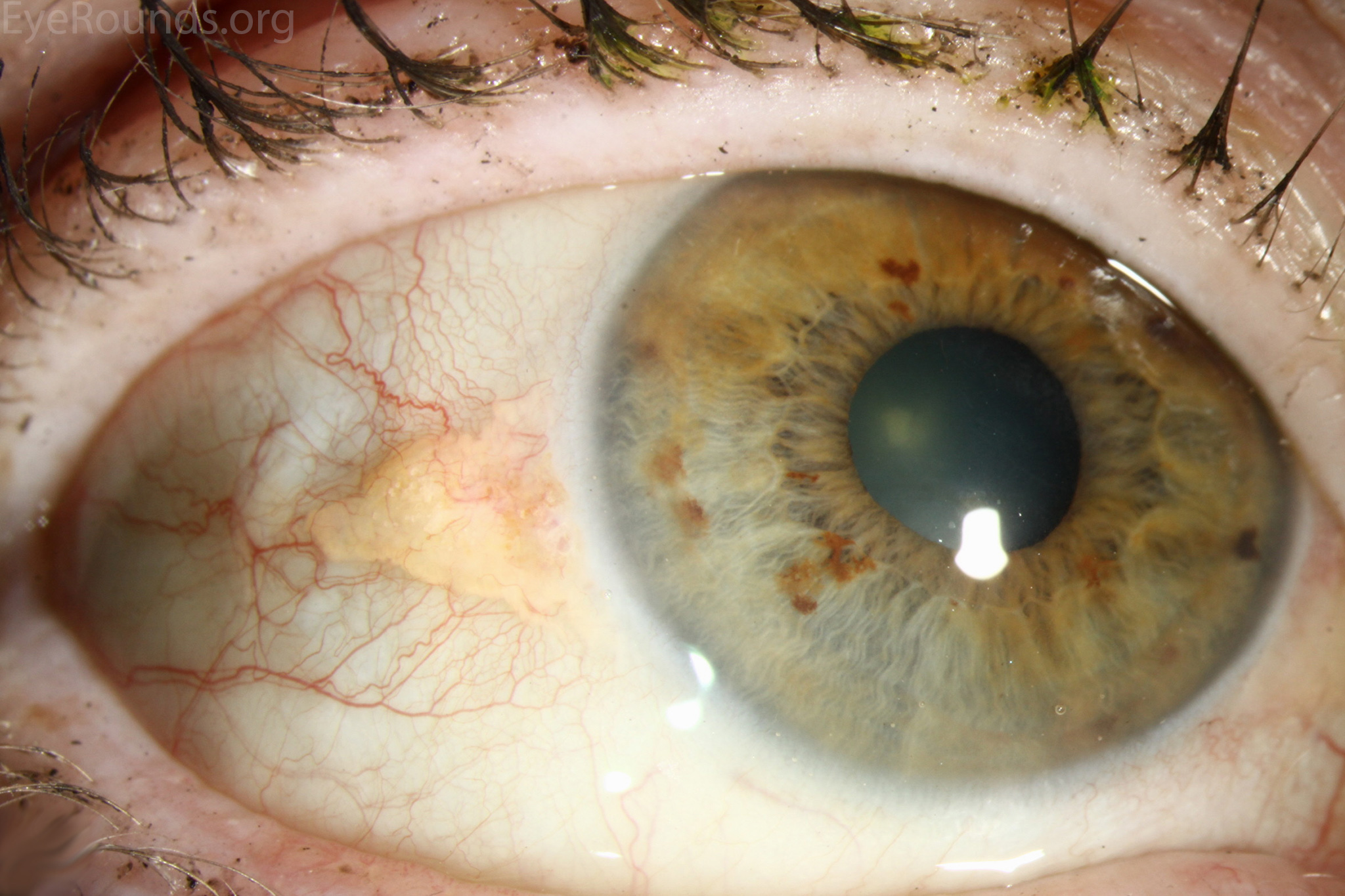
Pinguecula and Pterygium: what’s the difference?

Have you ever noticed a yellowish spot or a clear white film growing on the conjunctiva or the cornea of your eye? You may have pinguecula or pterygium.
Pinguecula
Pinguecula (pin-GWEK-yoo-lah): (Not to be confused with Pinguicula, the carnivorous plant known as the butterworts.) Pinguecula is a growth that appears as small yellowish spots located on the conjunctiva (the mucous membrane that lines the inner surface of the eyelids and continues to the front of the eye). A pinguecula can result from deposits of protein, fat, and/or calcium.

Pinguecula Treatments: Surgery is not required to treat pinguecula. Proper eye drops can be prescribed by an ophthalmologist, such as those used to relieve dry eye irritation. Steroid eye drops may also be prescribed to alleviate any swelling and redness, which may be causing the pinguecula.
Pterygium
Pterygium (tur-IJ-ee-um): It is also known as surfer’s eye. Pterygium is a mass of tissue that may have started as a pinguecula from the conjunctiva. The tissue is often raised and invades the cornea from the sclera (the white part of the eye), causing vision problems.

Notice in the image above, the mass of tissue grows onto the cornea.
Pterygium treatments: When a pterygium is large enough to cause impaired vision, an ophthalmologist will recommend surgery to remove the tissue mass. Once removed, a thin piece of transplanted tissue will be placed on the affected area to prevent recurrence of the pterygium.
Causes
There are three main factors that contribute to the development of pinguecula and pterygium:
- Exposure to ultraviolet (UV) light
- Exposure to wind and dust
- Untreated dry eyes
Treatment is assessed on a case-by-case basis. It recommended that you visit your ophthalmologist regularly to monitor the pinguecula/pterygium. The best way to prevent growth and/or regrowth is to avoid direct sunlight, dust, and dryness of the eye.
Prevention
Here are some tips to help prevent pinguecula/pterygium development:
- Wear sunglasses with ultraviolet protection
- Protect your eye from dust or debris by wearing safety glasses or goggles.
- Use artificial tears to moisten eyes when dry.
If you notice a pinguecula or a pterygium, you can schedule an appointment with Dr. Vicki Lin, located in Fountain Valley at iSight Vision Care, and have her take a look and come up with the best solution for you!
Keywords: Pinguecula, pterygium, eye growth, bump on eye, yellowish bomp, yellowish spot, white bump, white spot, how to get rid of pinguecula, how to get rid of pterygium, surfer’s eye, pterygium excision, ultraviolet light, dry eyes, sunglasses, pinguecula symptoms, pterygium symptoms, pinguecula causes, pterygium causes, eye irritation, eye inflammation
You Might Also Enjoy...


When Eye Drops Don’t Work Anymore: Surgical Treatments for Glaucoma

Help! My Vision Went Cloudy After Cataract Surgery

Autologous Serum Tears: An Innovative and Effective Dry Eye Treatment

Living With Keratoconus: Effective Management and Treatment Strategies


